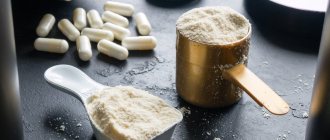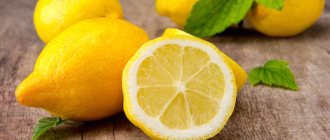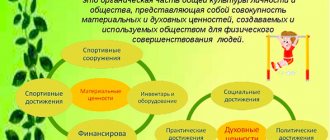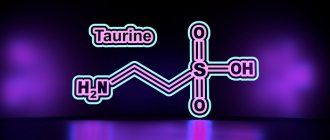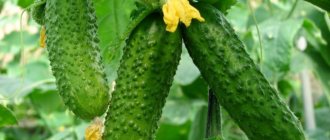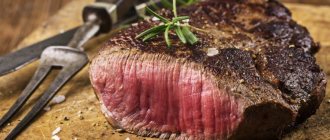02/09/2015 / Drinks
| Water, BJU and calorie content per 100 g of product | |||
| Calorie content 0 kcal | Proteins 0 g | Fat 0 g | Carbohydrates 0 g |
Water (otherwise hydrogen oxide, chemical formula H2O) - under normal conditions it is a transparent liquid that in a small volume has no taste, odor or color. Water, depending on conditions, can acquire three states: liquid, solid and gaseous.
About 70% of the surface of the globe is covered with water, and humans are also 70% water.
Water intended for human consumption usually undergoes certain purification and treatment.
Content of vitamins and microelements
Mineral water in its chemical composition is a combination of six key components (sodium, magnesium, calcium, sulfate, chlorine, bicarbonate). Depending on this, several types of water are distinguished.
1. Bicarbonate water - predominantly contains bicarbonate or mineral salts and is considered the most valuable of mineral waters due to its taste characteristics. 2. Chloride water (with a predominant content of sodium chloride) - has a salty taste. 3. Sulfate water (with a high content of magnesium sulfate) - has a bitter taste.
There is also mixed mineral water, which combines several types of microelements, which increases its usefulness. There is also water with a high content of active elements (calcium, iodine, fluorine and others).
Drinking water quality standards
The chemical elements in water and their permissible values for the safety of people, as well as for the functioning of household appliances and the plumbing system, are determined by sanitary and hygienic requirements. Safe concentrations of various chemical elements in water are published in SanPiN and GOST standards.
By the way, the standards for drinking water and technical water supplied to production are different. What parameters are used when analyzing the composition of a liquid:
- Physical
: these include color, smell, turbidity.
- Chemical
: presence of impurities.
- Biological
: presence or absence of bacteria, viruses, fungi.
- Radioactivity
: assessment of alpha and beta activity of a liquid.
Drinking water quality standards
State laboratories regularly conduct studies of water resources in different Russian cities and compile a list of places where the water is the cleanest according to GOST parameters. The first lines of the rating were occupied by Yoshkar-Ola and Saransk, and the last by Nefteyugansk, Stavropol, Kerch and Petrozavodsk. In Europe, water quality is taken more seriously; their quality criteria are superior to Russian ones. The highest scores according to our Sanitary and Norms Regulations are far behind the high standards of Sweden, Norway, Germany and other EU countries.
To determine the quality of water abroad, the Geneva Guidelines for Drinking Water Quality, as well as other general sanitary, epidemiological and hygienic requirements established by the Customs Union Commission, have been developed.
Beneficial features
The beneficial properties of mineral water appear depending on the content of certain active substances in it. In particular, the iron content in water prevents the occurrence and development of anemia, magnesium promotes the proper functioning of the nervous system, and is also responsible for regulating carbohydrate metabolism. Sodium has a beneficial effect on the muscular system and normalizes blood pressure. Potassium is essential for the normal functioning of the heart and kidneys. Calcium is good for healthy bones, teeth, cardiovascular system and muscles, and iodine is important for the normal functioning of the thyroid gland.
Lack of water in the human body can lead to disastrous consequences. Since the human brain is 75% water, a lack of it can lead to dizziness and headaches. Body temperature is also regulated by the body by maintaining a certain water balance.
Water removes waste from the body and helps distribute nutrients.
Nourish the body
Proteins (proteins) - high-molecular organic substances, built from twenty amino acid residues, form the basis of the structural elements of cells and tissues, as well as the vital processes of all organisms: they play a structural (construction of tissues and cellular components) and functional role (enzymes, hormones, respiratory pigments and other). Proteins are associated with the implementation of the main manifestations of life: metabolism, contractility, irritability, the ability to grow, reproduce and even think. By binding significant amounts of water, proteins form dense colloidal structures characteristic of our body.
The countless different types of proteins that we encounter in animal and plant organisms are explained by the enormous variety of possible sequential compounds in the molecule of the 20 amino acids common in nature. Proteins are complex high-molecular substances built from hundreds of amino acid residues. When a protein molecule is formed, amino acids are combined into long peptide strands, which are then usually twisted into ball-like or fibrous formations. Proteins can be simple (proteins) - containing only amino acid residues, and complex (proteids), in the molecule of which there are no components of a non-protein nature. In addition to structural proteins, protein substances include: enzymes - the most important accelerators of biochemical reactions in the body; some hormones are subtle regulators of metabolic processes; nucleoproteins are regulators of protein synthesis in the body and, probably, carriers of hereditary properties.
Enzymes have an amazing ability to speed up certain reactions tens and hundreds of thousands of times. Special enzymes are secreted in the human gastrointestinal tract, promoting the breakdown of food proteins and individual amino acids. Pepsin is secreted in the stomach, trypsin and chymotrypsin - in the pancreas, peptidases - in the intestines. The enzyme contained in saliva - amylase - breaks down starch into sugars; The pancreatic enzyme - lipase - in the presence of bile, breaks down bile and breaks down fats into fatty acids and glycerol. Enzymes are present in every cell of the human body, facilitating a variety of chemical metabolic reactions. According to their chemical structure, enzymes are either simple or complex proteins. Simple enzymes are proteins in which a special arrangement of amino acids gives them the ability to catalyze chemical reactions. The composition of complex enzymes, in addition to proteins, includes vitamin derivatives that are necessary for the synthesis of a number of enzymes, or some other non-protein compounds.
So, proteins are a plastic building material, the “building blocks” of living organisms (more than 20%). Muscles, bones and skin are especially rich in proteins. Enzymes (“biocatalysts”), hormones and antibodies also consist of protein. Proteins consist of 20 amino acids, which are subject to constant transformation. For humans, 9 of them are essential and must be consumed with food. These include: histidine, isoleucine, leucine, lysine, methionine/cysteine*, phenylalanine/tyrosine*, threonine, tryptophan, valine (* - can be used as substitutes). The content of various amino acids determines the character and function of the protein. The more essential acids, the more complete the protein. Animal products in this sense are more complete, while plant products often lack one of the essential amino acids. This disadvantage can be compensated for through suitable combinations with other products (Scheme 2).
The higher the nutritional value of proteins, the richer they are in essential amino acids. There are various parameters to determine the quality of proteins in terms of their nutritional value. One of them is biological value, defined as the percentage of nitrogen absorbed by the body in relation to its total content in protein (Scheme 1). Milk and eggs contain the best quality protein, as they contain all 9 essential amino acids in a ratio favorable to the body.
Product... nutritional value (%) (chart 1):
milk...93/eggs...100/cheese...85/soybeans...85/beans...73/rice...86/beef...75/fish...75/wheat...45/corn...70/rye...75
Another important parameter is the protein number, which is the percentage of protein weight to the edible portion of the product. The protein content of meat is 15-22%, fish 10-20%, eggs 13%, milk 3.5%, pasta 10.5%.
The optimal protein requirement is approximately 1 gram per kilogram of human body weight. Consumption of large doses of protein, to the detriment of the carbohydrate component, is not only harmful, but also unproductive. For most adults, protein intake is not an issue. Adults even get it in excess, with meat and dairy products. Excessive amounts of protein in the diet can cause mineral deficiencies in the body. Protein breakdown products must be processed by the liver and excreted by the kidneys, during which calcium, magnesium and other minerals are washed out. Excess protein often causes osteoporosis, allergies and immune system dysfunction. High protein foods - all meat, fish and dairy products - contain quite a lot of fat. Excellent plant sources of protein: nuts, seeds, legumes and whole grain products, which also provide the body with a lot of ballast substances.
Food… ratio (%)… biological value (diagram 2):
legumes+corn…52:48…101/milk+wheat…75:75…105/egg+wheat…68:32…118/egg+milk…71:29…122/egg+potatoes…35:65…137
Amino acids
Amino acids - organic compounds, amino derivatives of carboxylic acids - are the main structural material for the synthesis of proteins and peptides in the body. The proteins of all living organisms are built from various combinations of the same set of 20 amino acids. There are two varieties of each amino acid - D and L-forms. As a rule, L-amino acids are used for protein synthesis. Amino acids enter the body with plant and animal foods, being products of hydrolysis of food proteins. Amino acids enter the bloodstream by passing through the intestinal mucosa. Alanine and ketoglutaric acid are also formed there. Then most of the amino acids enter the liver, and some of them participate in metabolism in the intestines. This is where protein synthesis begins, stimulated by dietary amino acids.
The liver is the most important organ involved in the metabolism of amino acids. In addition, the liver is a kind of buffer that protects other tissues from the not always beneficial effects of an excess of amino acids. The liver is involved in regulating the level of amino acids in the blood, which is vital for the normal functioning of the body. When the level of amino acids drops, its amount is replenished through the use of protein from the liver itself. The processes of intensive protein synthesis are also associated with liver cells, but if there is a lack of one of the amino acids - tryptophan - in the incoming food, protein synthesis stops. In the liver, metabolic processes do not affect all amino acids. Some of them, such as valine, leucine and isoleucine, are not converted in the liver into building material for protein synthesis, but enter the general bloodstream. Metabolism of these amino acids occurs mainly in the kidneys and muscles.
Amino acids are not only components of the protein molecule, but also independent biologically active regulators of various body reactions. In addition to the liver, the concentration of amino acids in the bloodstream is controlled by certain hormones. These include, for example, insulin, glucagon and glucocorticoids. And the very change in the level of amino acids in the blood stimulates the production of certain hormones. For example, it has been established that insulin production is stimulated by the entry into the bloodstream of branched-chain amino acids (essential), and glucagon production by non-essential amino acids, that is, those that can be synthesized in our body.
Gluconeogenesis is the process of obtaining energy for glycolytic metabolism from non-carbohydrate sources. The glucosamine cycle is one of the components of gluconeogenesis. When muscle proteins are used as an energy source, branched-chain amino acids are broken off from myosin fibers and converted into the amino acid alanine, which becomes a source for glucose synthesis in the liver. In the glucose conversion cycle, branched-chain amino acids act as chemical group donors for pyruvate, followed by the formation of ammonia. Converted into glucose, amino acids participate in the tricarboxylic acid cycle, which produces energy.
Alanin
plays a major role in the cycle of conversion of amino acids to glucose, has an immunomodulatory effect.
Arginine
stimulates the release of insulin, glucagon and growth hormone into the bloodstream, has a pronounced anabolic effect, helping to heal wounds and participating in the formation of collagen. Arginine’s ability to increase the body’s immunoreactivity is due to its effect on T-lymphocytes of the immune system. In addition, arginine is a precursor to creatine.
Asparagine
and
aspartic acid
are involved in the conversion of carbohydrates into muscle energy, playing an important role in the mechanisms of muscle contraction.
Valin*
belongs to the essential amino acids and is actively used by muscles during physical activity.
Histidine*
participates in the production of red and white blood cells and is used for anemia, the treatment of allergic diseases, stomach and intestinal ulcers.
Glycine
promotes the synthesis of other amino acids and is part of the structure of hemoglobin and cytochromes. In terms of energy, it is a key link in the synthesis of glucagon, one of the main factors influencing the use of muscle and liver glycogen reserves.
Glutamic acid
cannot be synthesized in the body from other amino acids, but it itself is the main precursor for the synthesis of a number of essential amino acids and ensures metabolic processes. Through chemical transformations, glutamine, proline, arginine and glutathione are formed from glutamic acid. Glutamic acid is a potential source of energy in the body and promotes concentration.
Isoleucine*
(* - essential amino acid) plays a key role in the production of hemoglobin. In addition, this branched-chain amino acid provides muscle tissue with energy and eliminates the symptoms of muscle fatigue due to overwork.
Leucine*
used by muscles during exercise as a source of energy, slowing down the breakdown of muscle protein. Leucine has been found to promote wound healing and bone healing.
Lysine*
important role in protein synthesis in muscles and connective tissue, stimulates bone growth and collagen synthesis. The most important property of lysine is its ability, together with vitamin C, to form L-carnitine. Lysine plays an important role in the growth of the body. With a lack of this amino acid, growth slows down.
Acetyl - L-carnitine
- the most active form of carnitine, which affects the body’s fat metabolism. It has a fat-burning effect, improves aerobic performance and the oxidation of fatty acids in the heart. This amino acid can restore the normal functioning of mitochondria in old age, increasing their energy production by a quarter. L-carnitine improves muscle endurance by helping them use oxygen more efficiently. In the body, acetyl-L-carnitine is obtained from L-carnitine under the influence of anaerobic physical activity, due to the addition of an acetyl group. After the formation of acetyl-L-carnitine, the acetyl group is transferred to coenzyme A, which, in turn, is a necessary component for the synthesis of creatine in muscles. Other sources of acetyl-L-carnitine are lysine and methionine. Acetyl-L-carnitine also affects regenerative processes in nerve tissue and nerve conduction. Testosterone production in men is also associated with the action of acetyl-L-carnitine on hypothalamic structures.
So, carnitine plays an important role in the transport of fatty acids across cell membranes, removing triglycerides into the bloodstream, where they will subsequently be used as a source of energy. This is very important when producing energy during prolonged aerobic exercise. Carnitine is also needed to increase muscle mass and reduce body fat.
Methionine*
is an essential amino acid - a precursor to cystine and creatine. Methionine is involved in the restoration of liver and kidney tissue and helps eliminate toxins from the body. This amino acid stimulates an increase in antioxidant levels and is involved in fat metabolism, reducing cholesterol levels.
Cystine
. The occurrence of antioxidant processes in the body is largely associated with the action of cystine. Another important application of the effects of this amino acid is to enhance healing processes. Cystine also affects the inflammatory process itself.
Proline
is the main component of connective tissue collagen.
Serin
- one of the most important amino acids necessary for the production of cellular energy. Like many other amino acids, serine stimulates the body's immune system and can also increase blood glucose levels. This amino acid is part of phosphatidylserine, which belongs to the class of phosphoacylglycerols. The main effect of phosphatidylserine is associated with the transmission of nerve impulses to the brain and, in particular, to the hypothalamus. With age, the production of this factor decreases. Therefore, phosphatidylserine is often used to improve mental performance. It is a stimulant of brain processes and reduces cortisol levels, thus slowing down the catabolic processes in the body. This substance is not directly involved in the mechanisms of nerve conduction, but due to other effects it has a great influence on the state of mental performance. The incentives to improve brain function when taking this amino acid are an increase in glucose levels, which is important for brain function, and the level of cyclic AMP - adenosine monophosphate, which enhances nerve impulses.
Threonine
* participates in the neutralization of toxins, prevents the accumulation of fat in the liver and is an important component of collagen.
Tryptophan*
is a precursor to the neurotransmitter serotonin, stimulates the production of anabolic hormones and growth hormone.
Tyrosine*
is a precursor to a number of neurotransmitters and growth hormone. The participation of tyrosine in the mechanisms of nerve conduction is associated with adrenergic processes. The adrenergic part of the nervous system is responsible for the state of “long-term” memory. Tyrosine, in combination with other amino acids, or more precisely, phenylalanine and DL-phenylalanine, is involved in the production of adrenaline. Dopamine is involved in all processes of nervous activity. Adrenaline and dopamine, being neurotransmitters, are synthesized from tyrosine. The chain of sequential transformations of tyrosine into adrenaline is as follows. At the first stage, the so-called DOPA-3-,4-dihydroxyphenylalanine is formed from tyrosine. DOPA is subsequently converted to dopamine, which is hydroxylated to norepinephrine. And finally, adrenaline is formed from norepinephrine, which is also an important neurotransmitter. Thus, tyrosine is a powerful means of activating brain functions and reducing depression. The very occurrence of depression is associated with stressful situations that cause a deficiency of tyrosine in the body.
Phenylalanine*
stimulates the formation of neurotransmitters, being the main precursor of tyrosine. Phenylalanine is known to improve memory, tone the body and suppress appetite.
Cysteine*
. An important property of this amino acid is the ability, in combination with L-aspartic acid, to neutralize toxins. Cysteine also stimulates the activity of white blood cells.
Taurine
promotes the use of fats in the energy cycle. There is information about the action of taurine as a neurotransmitter.
Ornithine
stimulates the secretion of growth hormone, supports the functioning of the liver and immune system, and has an anabolic effect. Ornithine alpha-glutarate stimulates the synthesis of essential amino acids, in particular glutamine, arginine and proline, and reduces the accumulation of ammonia in the body.
Application
First of all, the human body needs water in its pure form. It has been established that the daily water requirement is 30 ml/kg body weight. In addition, water is widely used in cooking, as well as all kinds of drinks.
Market Analytics
- Top 10 Best Beauty Products in 2022
- Global cosmetics market 2022: an unprecedented test for the global cosmetics industry
- Top 10 Cosmetic Research and Development of 2022
Convenient search for beauty salons on our website
Beauty salons in Moscow Beauty salons in St. Petersburg Beauty salons in Ekaterinburg Beauty salons in Novosibirsk
Latest blog posts on our website
- Naturecream / Properties of the “Sunny” oil itself
- Naturecream / “Sugar” wrinkles - or what glycation can do
- Naturecream / Esterified oils
- Naturecream / Arnica - the magical plant of alchemists
- Naturecream / Tremella Extract - Snow Mushroom Detox for Skin
- Prostye-sovety / How to visually enlarge your lips with makeup
- Naturecream / Apricot kernel oil for face
- Naturecream / MATRIXYL3000 - the best skin elasticity stimulator
- Naturecream / SPF in Natural Oils
- Naturecream / Geranium (Pelargonium) oil for skin health and beauty
Latest forum topics on our website
- Natalya / How to properly make a gelatin mask?
- Mrs._Smith / Badly sunburned! What to do?((
- Ice / Is it necessary to combine fitness classes with a diet?
- Antonova / What can be used for hair loss?
- Radio operatorKat / Who was on a protein diet?
Other articles in this section
| Oolong milk tea (oolong) dry Oolong milk tea has a large number of different names. It is sometimes called oolong or oolong, which is linguistically incorrect and is an error in the English pronunciation of its name. Another, this time official, name is the name “qing cha”, which translated from Chinese means “turquoise tea”. In the Chinese tea classification, this variety occupies a place in the middle between green and red tea. It occupies this place due to the fact that it has a pronounced taste of green tea, with all its properties, and a very specific aroma of red tea. |
| Blueberry juice Blueberry juice is a natural, healthy, very tasty drink that is made from blueberries, which grow in natural conditions in mountainous regions, pine and deciduous forests, the Tundra, the Far East, and in the marshy areas of the northern regions of Asia, Europe, and America. |
| Coffee with cream Coffee is the fruit of an evergreen tree that belongs to the madder family. Coffee trees are often classified as shrubs because their typical height is 5 meters. In the wild there are specimens reaching 10 meters in height. Fruit ripening for different varieties lasts from 5 to 11 months. As a rule, each coffee tree bears fruit intensively for 15 years, producing over 3 kilograms of fruit per year. Subsequently, the yield decreases slightly and lasts for another 35 years. |
| Pomegranate juice Pomegranate has been known for quite a long time. Ancient Greek and Roman healers revered this fruit for its benefits and great value in medicine. These properties are not forgotten today. Pomegranate juice obtained from the fruit of this fruit, especially freshly squeezed, is no less useful. |
| Natural ground dry coffee The first natural ground coffee was packaged in cans and began to be produced in America in 1878. A few years later, the company received a patent for this type of coffee to produce the product in a vacuum container. The modern market contains several thousand types of coffee. Coffee fans are divided into those who prefer ground coffee and those who love beans. The ground version is somewhat cheaper in cost than grains. |
| Black tea with lemon and sugar It is not known for certain when the tradition of adding lemon to a tea drink began. But Russia is considered the birthplace of this invention. There is an opinion that this happened thanks to our roads during long carriage rides. During such a journey, people got seasick; at roadside stations they were offered tea. And to get rid of nausea, travelers asked for something sour or salty. Cucumbers and sauerkraut did not go well with tea, but many people liked the lemon slice. This is how a drink was invented, which is mentioned in foreign cookbooks as Tea in Russian. |
| Dry red tea According to the European classification, the color of tea is determined by the raw materials from which it is produced. Thus, Chinese “red” tea, having a dark gray color, will be considered “black” in Europe. In China, the color of tea is determined by the color of the finished drink. |
| Peach juice For many centuries, people believed that the peach, the most delicate and very tasty fruit, comes from Persia. The reason for this was that he arrived in most European countries with caravans of merchants from this country. This opinion lasted until the end of the 19th century. Only a long study of manuscripts by botanists made it possible to discover the true homeland of this fruit. It turned out that the peach, like many fruits, comes from China. Nowadays, it has already been scientifically proven that peach cultivation began for the first time in China. |
| Coffee with Condensed Milk and Sugar Coffee is believed to have been discovered in 850 AD. But coffee received its full calling much later, after several centuries. At first, it was not the coffee beans themselves that were consumed, but only the coffee berries. This drink was used as a tonic. Somewhat later, in Yemen, the drink began to be prepared from ripe dried coffee fruit, or rather its pulp. This is the famous “white Yemeni coffee”, also called “geshir” or “kishr”. |
| Dry roasted coffee beans The first devices for roasting coffee beans consisted of a drum into which coffee was poured and kept under fire. Roasters are the most popular device for roasting grains. Such a device uses the same technology as the first devices, but improved by an order of magnitude. |

